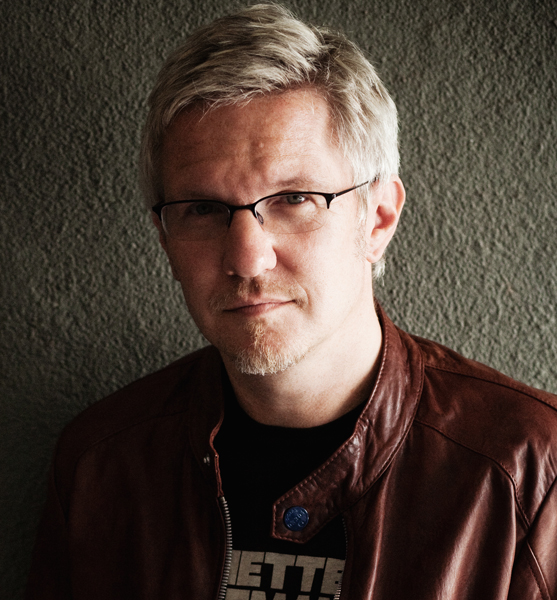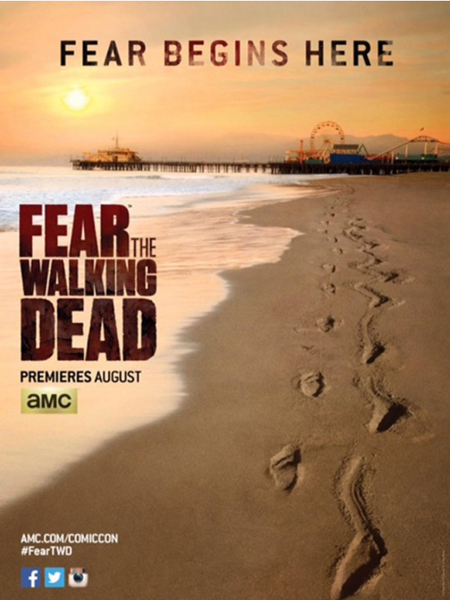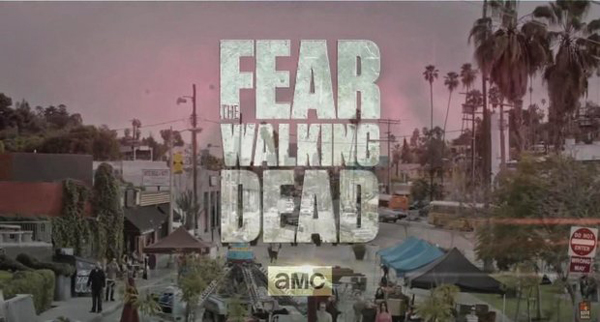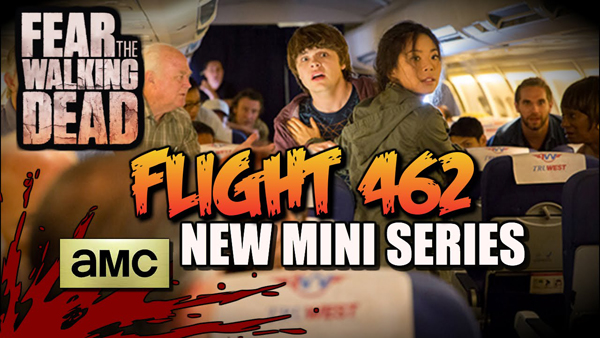Scoring the Zombie Apocalypse Spin-Off
Interview by Randall D. Larson
Austrian-born composer Paul Haslinger gained an interest in the new realm of electronic music while studying music in Salzberg and Vienna. As a member of the pioneering electronic band, Tangerine Dream, for five years during the 1980s, Haslinger contributed to four very successful albums and a number of films, including Kathryn Bigelow’s NEAR DARK (1987). After leaving Tangerine Dream in late 1990, Haslinger released a trio of solo albums and scored two animated sci-fi shorts on his own, PLANETARY TRAVELER (1997) and INFINITY’S CHILD (1999) for Jan Nickman. He secured a position as a programmer and orchestrator for Graeme Revell, helping the composer achieve the effective textures and stylish atmospheres to such films as SPAWN (1997), PITCH BLACK (2000), RED PLANET (2000), and TOMB RAIDER (2001).
By 2000 he had established himself as a film scorer and was building a reputation for composing music that incorporated electronics along with robust classical sensibilities. His music for 2003’s action-horror film UNDERWORLD and its second and third sequels allowed him to flex his electronic energies in a brooding world of grim fantasy, while his scores for Paul Anderson’s DEATH RACE and DEATH RACE 2 have created high-octane music through a fusion of industrial rock and electronics. Recently, Haslinger scored the first season of AMC’s FEAR THE WALKING DEAD, a prequel/spin off of the network’s hit zombie apocalypse series, THE WALKING DEAD, now in its 6th season. Interviewed last October, Haslinger explains his approach to scoring FTWD and accompanying its characters as the zombie apocalypse begins. The series’ second season commences later this year.

Q: How did you become involved in scoring FEAR THE WALKING DEAD?
Paul Haslinger: I watched an early cut of the pilot and felt it was a great opportunity for music. I saw some qualities in the pilot that reminded me of 28 DAYS LATER, still my favorite Zombie movie to date. Later on I met with showrunner Dave Erickson and music supervisor Linda Cohen. They were both fans of HALT AND CATCH FIRE (my other show on AMC), so it was easy to make a good impression… It has been a great experience working on the show, and I’m grateful to Dave Erickson, Robert Kirkman, and Gale Anne Hurd for their support and their trust in my abilities.
Q: As a spin-off of THE WALKING DEAD, did the musical design of that parent series present any kind of a model to the kind of music the producers wanted in FTWD?
Paul Haslinger: Not really. The producers realized they had to write their own story, in their own way. We are in a parallel universe, so to speak and while there can be similarities, there can never be any straight connections or inspirations.?
Q: Was Atticus Ross’s title music for FTWD already written when you came into the project? Was there any need to reference that music in your episode scores?
Paul Haslinger: The Main Titles are usually handled as a “project within the project,” and at the time I was already busy writing music for the pilot. I am good friends with Atticus, and have the greatest respect for his work over the years. We both keep fairly busy, so we typically only run into each other socially every once in a while.. Despite the lack of direct interaction, I think one of the appeals for AMC to hire Atticus for the MTs and me for the score was the fact that our musical sensibilities will always match to some degree, whether we work together directly or not.
 Q: Musically, how did you treat the main characters in the series? Were you able to musically convey their perspective as they experience the zombie apocalypse taking place all around them?
Q: Musically, how did you treat the main characters in the series? Were you able to musically convey their perspective as they experience the zombie apocalypse taking place all around them?
Paul Haslinger: I usually prefer to surround the characters with music, rather than putting music on the characters. They experience their world falling apart, which is a gradual realization. In this process, music sets the stage and accompanies their discoveries, their fears and their decisions. It allows the audience into the world of these characters. Human beings are complex, they have more than one theme. So, I’ve always felt it important for the music and story to show different sides and aspects of each character. The span of a TV-series naturally allows for deeper character development, compared to the more compressed schedule of a film, or a piece of theater.
Q: What kind of musical design and palette did you bring to bring the walking dead to life (so to speak) and enhance the danger, relentless presence, and horror of these creatures? In other words, how did you create that titular “Fear” of the Walking Dead in your episode scores – and how did that develop as the series progressed?
Paul Haslinger: Well, I get up in the morning, drive my kids to school, kiss my wife good-bye and then spend the rest of my day figuring out the best way to scare the crap out of people! All kidding aside… as a reference, my starting point for this was the type of tension created in films like 28 DAYS LATER and THE SHINING. They had this great feeling of unease, of things that had happened but you didn’t know exactly what they were. And it felt real to the characters; it was part of their world. So, going after this kind of tense, strange musical fabric was the starting point. As we get deeper into the story, I imagine the music developing towards more of an APOCALYPSE NOW feel, with a further reduced approach, closely coordinated with sound design.
The Walkers will be a part of this new world the characters are being confronted with. We know they can get ugly, we know they pose an existential threat, but they also command compassion. Until we whack them in the head, hard!
Q: How have you scored the mini web series FEAR THE WALKING DEAD: FLIGHT 462? Presented in tiny snippets, how have you developed your score across the developing arc of its story?
Paul Haslinger: FLIGHT 462 was all temped with original score from FTWD. When they were getting ready to mix, I took a look at all the episodes and went in on a few of them to write additional, original material. As this connects to season 1 (and possibly also to season 2), it was important for the producers to have consistency in sound and music.
For more information on the composer, see http://www.haslinger.com/






